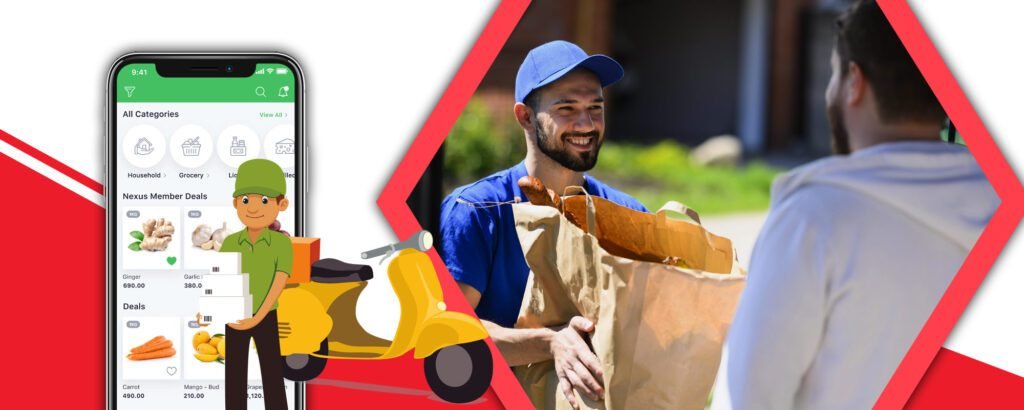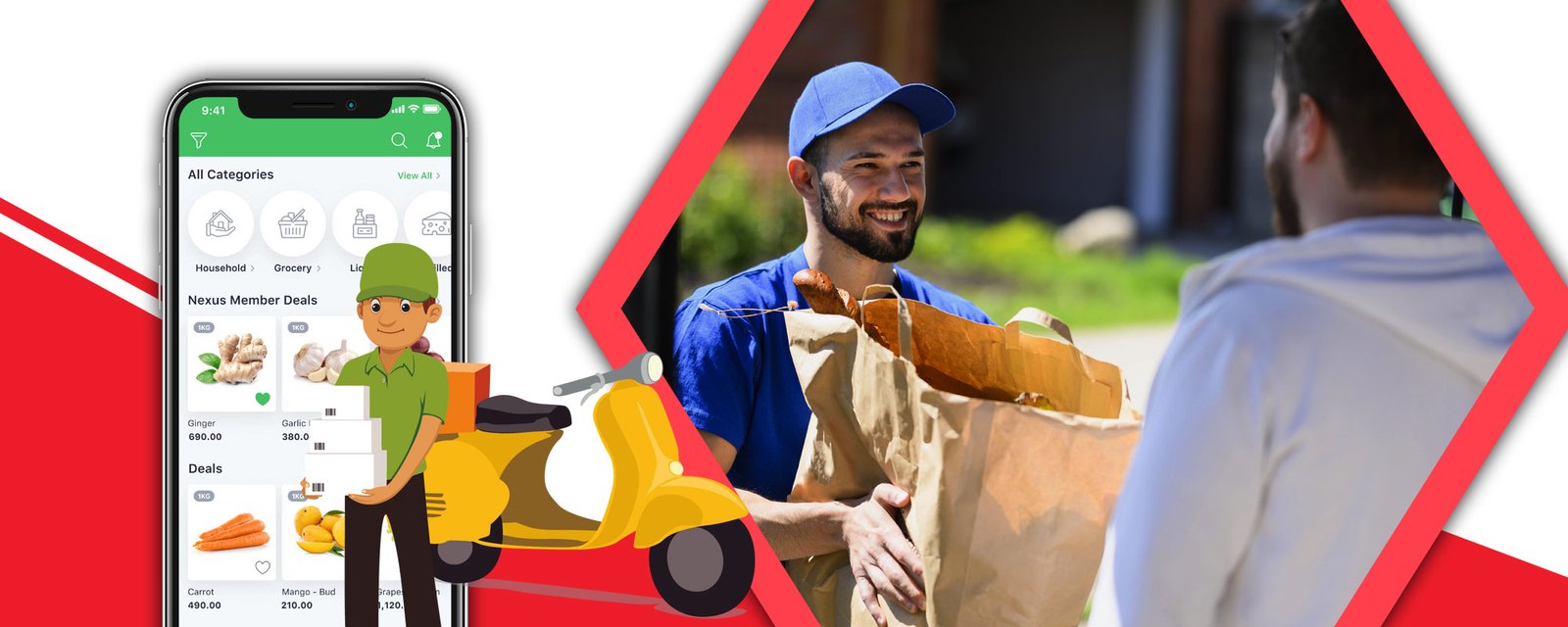
Grocery Delivery App- Comfort and convenience have been the aspects of paramount importance that contribute to any business being successful. Right from something as simple as a pair of scissors to something as complicated as a supercomputer, it is only the solution that is marketable and makes a profit.
This has led to a lot of businesses transforming themselves in terms of customer satisfaction and convenience. One of the latest technological transformations that have impacted every service business is going on-demand through mobile applications.
The business growth has come at a perfect juncture when multiple aspects like smartphone and internet penetration, internet speeds, and the expectations of customers in terms of service excellence and satisfaction. Uber can be considered the pioneer of this revolution and today, the business model has trickled into every possible vertical including but not limited to food delivery, grocery delivery, babysitting, household services, handyman services, beauty services, and medical consultations.
In all of this, grocery delivery has managed to carve a separate niche for itself in terms of growing demand. The coronavirus crisis has also heavily contributed to the rapid growth of grocery delivery on-demand applications owing to the restrictions imposed by the governments on minimizing human contact and social distancing. The fact that the download numbers of the apps of Walmart and target reached unprecedented numbers in the tune of more than 50000 during the COVID-19 crisis is a loud and clear testimony to the fact that grocery delivery on-demand shows no signs of slowing down.
The Different Avatars
Often when we think about grocery delivery on-demand application development, we do not attach any note of variety. However, there are different types of grocery delivery applications that you can consider especially at a time when the business is growing at an unprecedented rate and the market is still open for new competitors.
There are dedicated grocery delivery applications for chains of supermarkets like Walmart. These applications ensure that The delivery for the customers is affected from one of the centers that is close to the location of the user. It is, in essence, considered an extension of the number of stores that the chain has.
There are aggregator apps that list out the grocery stores and the items available in those stores for a user in a particular location. The app takes care of the tedious task of collecting information from all the stores and displays it in a curated and organized fashion. The task of delivering the grocery parcel, however, vests with the grocery store. The app does not in any way associate itself with the task of delivery. The payments can either be processed through digital payment instruments within the app or can be made as a cash payment to the delivery executive directly to the store.
One of the most common types of grocery delivery applications is the marketplace model. The marketplace not only lists the groceries available but also takes care of delivering them to the location of the customer. This means that grocery suppliers can focus on their core which is stalking up items and selling it to the people who presented themselves in their premises. Instacart and Amazon fall into this category. They might consider tying up with local vendors or can also consider having their own warehouse to take care of the supplies. Going with the first option ensures that they do not have to invest in warehousing, and at the same time, make the entire system democratic by bringing in local vendors who have always been under the threat of disappearing if online grocery delivery applications start to take precedence.
Some small stories which only have a single branch in a single location are so aspirational that they decided to create their own dedicated application. These apps might not be famous but if the store has established an identity in its location, it is bound to get its returns!
In addition to grocery delivery, the apps can also for additional services like price comparison, programs, and discounts. adding all the features only make your shopping app more universal in its acceptance and patronage.
Features of a grocery delivery app:
For grocery delivery businesses to function properly multiple apps need to be in place. There should be dedicated applications for the user, the grocery store, and the delivery executive as well. Overseeing all these silos of business, an administrator should be looking into the general health and proper functioning of the app.
Onboarding – Your app should make it extremely easy for users, grocery stores and delivery executives to sign up for your services. The users should be able to sign up using legacy login credentials like Google or Facebook. The stores should have a minimal entry form that collects vital pieces of information like the taxation identity, the physical location, and the operating radius. The delivery executives should be onboarded with meticulous care, and they will need to go through a verification and authentication process.
Commercials – it has to be admitted that every business comes down to money! Your users should be able to make payments using multiple payment instruments like credit cards, debit cards, and internet banking point to make this possible, you will have to tie up with a versatile payment services provider like Braintree or Stripe or PayPal. The payments made through the app to the store should be quickly processed into their accounts, and it plays a major role in ensuring that the stores stick to your delivery brand. The delivery executive should also be given periodic payments as they have to meet ongoing expenses.
Review & Ratings – keeping the entire ecosystem democratic is extremely important for any on-demand delivery application that connects demand and supply. A review and rating system should be there in place for customers to rate their experience with the store and the delivery. This will create a platform for stores that excel in customer satisfaction to be listed on the top of searches, and for the delivery executive to discipline their actions and conduct.
Customer Delight – it is the factor of customer delight that differentiates the mediocre from the excellent. Simple features like offers and discounts, loyalty programs, lowest price guarantees, subscriptions and savings, suggestions of items based on their order history and promises like delivery within a fixed time will go a long way in ensuring that your customers stick to your brand. It has been found through research that the possibility of customers sticking to a single brand is higher when it comes to grocery delivery. You can also increase the magnitude of your customer delight by ensuring that you have a customer support team that is always available to resolve the issues of customers. Your support should be available across multiple platforms including but not limited to chat, email, and phone.
Conclusion Grocery Delivery App
The projected increase in the demand for grocery delivery on-demand applications creates a parallel market for grocery delivery app development. Considering the possibilities of growth, it is one of the most lucrative ideas for any aspiring entrepreneur. If you would like to be one of those, all you need to do is get in touch with grocery app development companies.
See Also: how-to-start-a-valet-parking-business
They might consider either developing the entire app from scratch for using white label clones of apps like Instakart and customizing them according to your business requirements. In either case, you are all set to benefit from the app and you are all set to deliver the story of profit and success!



